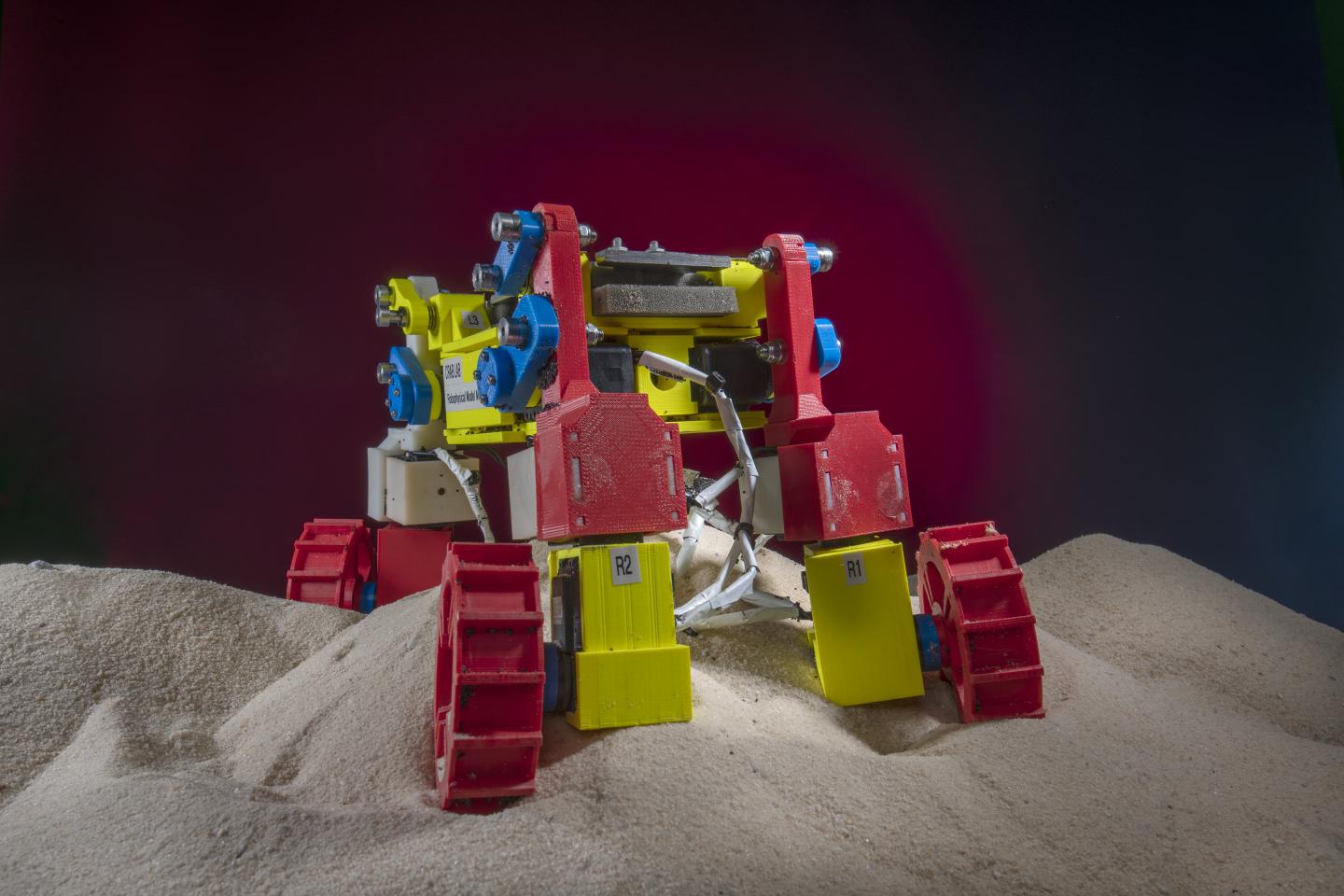Researchers have built a new robot with complex locomotion techniques that allow it to climb sand-covered hills without getting stuck.
They used a move the researchers at Georgia Institute of Technology dubbed rear rotator pedaling, to enable the robot–known as the Mini Rover–climb a slope. The design combines paddling, walking, and wheel spinning motions. The rover’s behaviours were modeled using a branch of physics known as terradynamics.
The robot, developed with U.S. Army funding, is equipped with wheeled appendages that can be lifted and has caught the attention of NASA for potential surveying of a planet or the Moon.
“This basic research is revealing exciting new approaches for locomotion in complex terrain,” said Samuel Stanton, a program manager at ARO. “This could lead to platforms capable of intelligently transitioning between wheeled and legged modes of movement to maintain high operational tempo.”
Making of the robot

CREDIT: Christopher Moore, Georgia Tech
Loose materials like sand flow can create problems for robots moving across it. Hence, according to Dan Goldman, the Dunn Family Professor in the School of Physics at the Georgia Institute of Technology, “avalanching materials from the front wheels, creates a localized fluid hill for the back wheels that is not as steep as the real slope”.
Collaborating with NASA
A robot built by NASA’s Johnson Space Center pioneered the ability to spin its wheels, sweep the surface with those wheels and lift each of its wheeled appendages where necessary, creating a broad range of potential motions.
Using in-house 3-D printers, the Georgia Tech researchers collaborated with the Johnson Space Center to recreate those capabilities in a scaled-down vehicle with four wheeled appendages driven by 12 different motors.
The rover was developed with a modular mechatronic architecture, commercially available components, and a minimal number of parts, according to Siddharth Shrivastava–an undergraduate student in Georgia Tech’s George W. Woodruff School of Mechanical Engineering.
Unique features
The rover’s broad range of movements gave the research team an opportunity to test many variations that were studied using granular drag force measurements and modified Resistive Force Theory.

CREDIT: Goldman lab, Georgia Tech
The team began with the gaits explored by the NASA RP15 robot, and experimented with locomotion schemes that could not have been tested on a full-size rover.
The researchers also tested their experimental gaits on slopes designed to simulate planetary and lunar hills. They did so by using a fluidized bed system known as the Systematic Creation of Arbitrary Terrain and Testing of Exploratory Robots (SCATTER), which could be tilted to evaluate the role of controlling the granular substrate.
Gait discovery
The new gait allowed the rover to climb a steep slope with the front wheels stirring up the granular material – poppy seeds for the lab testing – and pushing them back toward the rear wheels.
The rear wheels wiggled from side-to-side, lifting and spinning to create a motion that resembles paddling in water.
The material pushed to the back wheels effectively changed the slope the rear wheels had to climb, allowing the rover to make steady progress up a hill that might have stopped a simple wheeled robot.
Goldman explains that “if you end up making too much of a mess with most robots, you end up just paddling and digging into the granular material. If you want fast locomotion, we found that you should try to keep the material as solid as possible by tweaking the parameters of motion.”
But simple motions had proved problematic for Mars rovers, which famously got stuck in granular materials. Goldman says this gait discovery might be able to help future rovers avoid that fate.
“This combination of lifting and wheeling and paddling, if used properly, provides the ability to maintain some forward progress even if it is slow,” Goldman said.
Way forward
The researchers hope next to scale up the unusual gaits to larger robots, and to explore the idea of studying robots and their localized environments together.
Though the Mini Rover was designed to study lunar and planetary exploration, the lessons learned could also be applicable to terrestrial locomotion – an area of interest to the Army. The research has been published in the journal Science Robotics.
